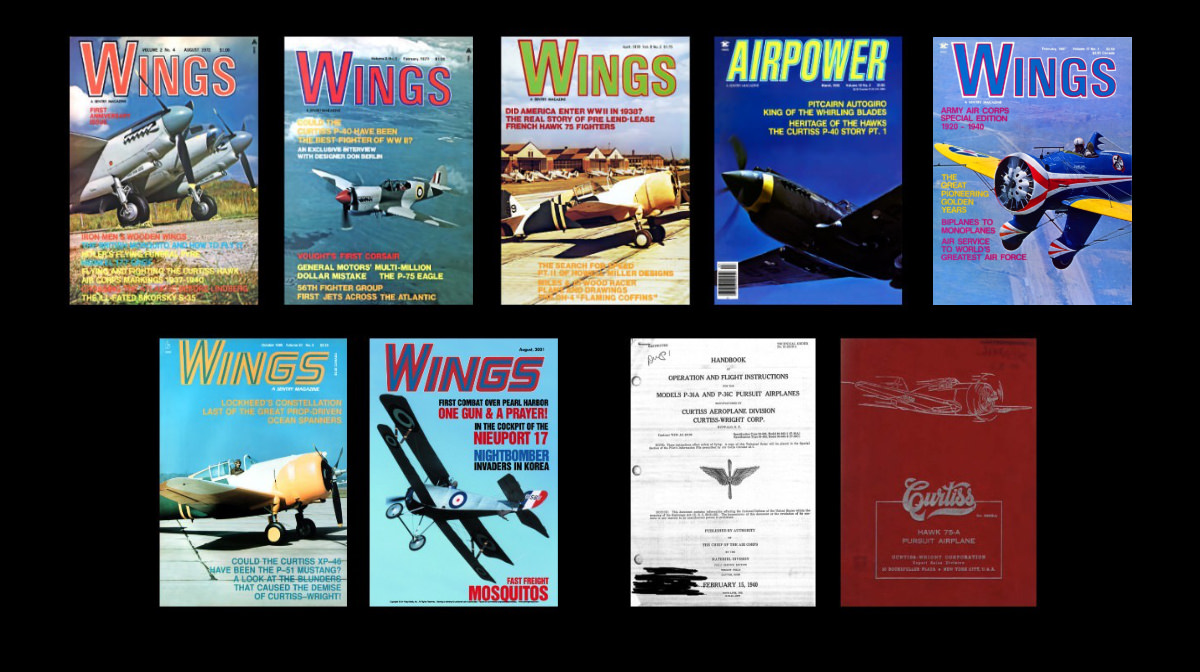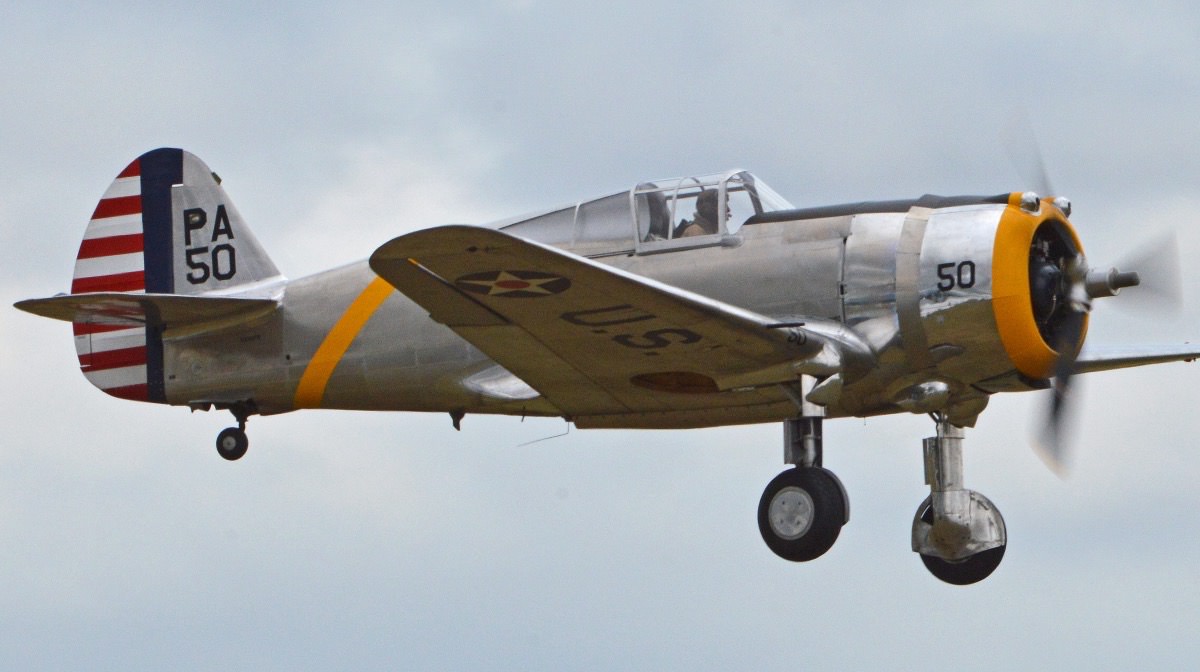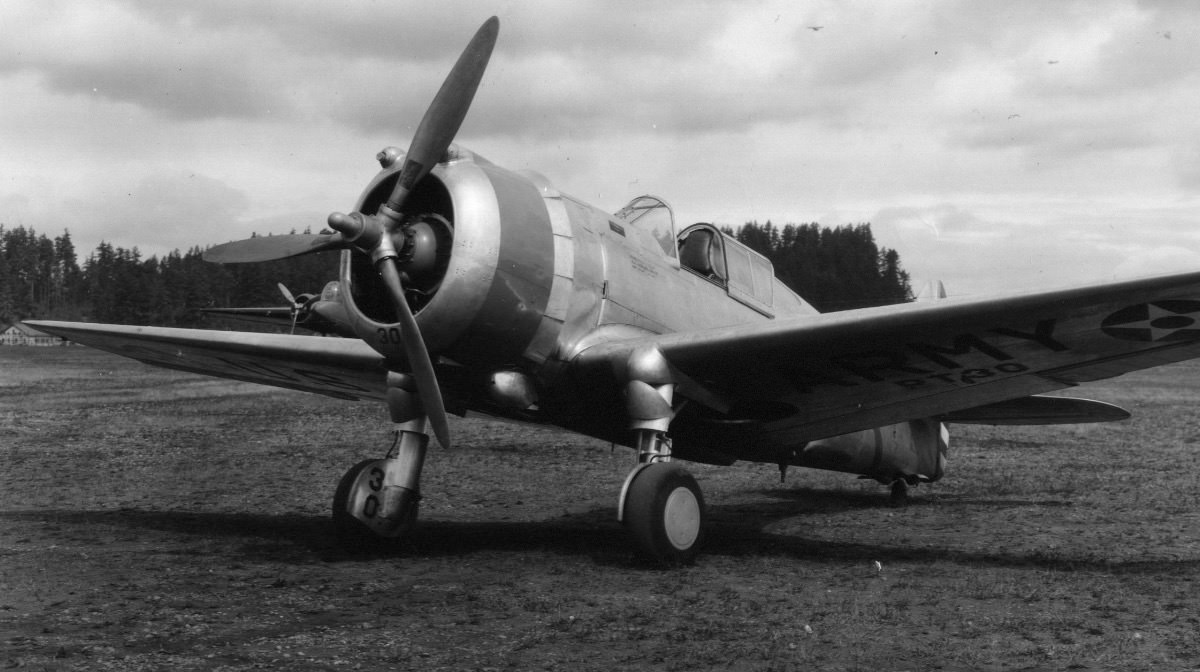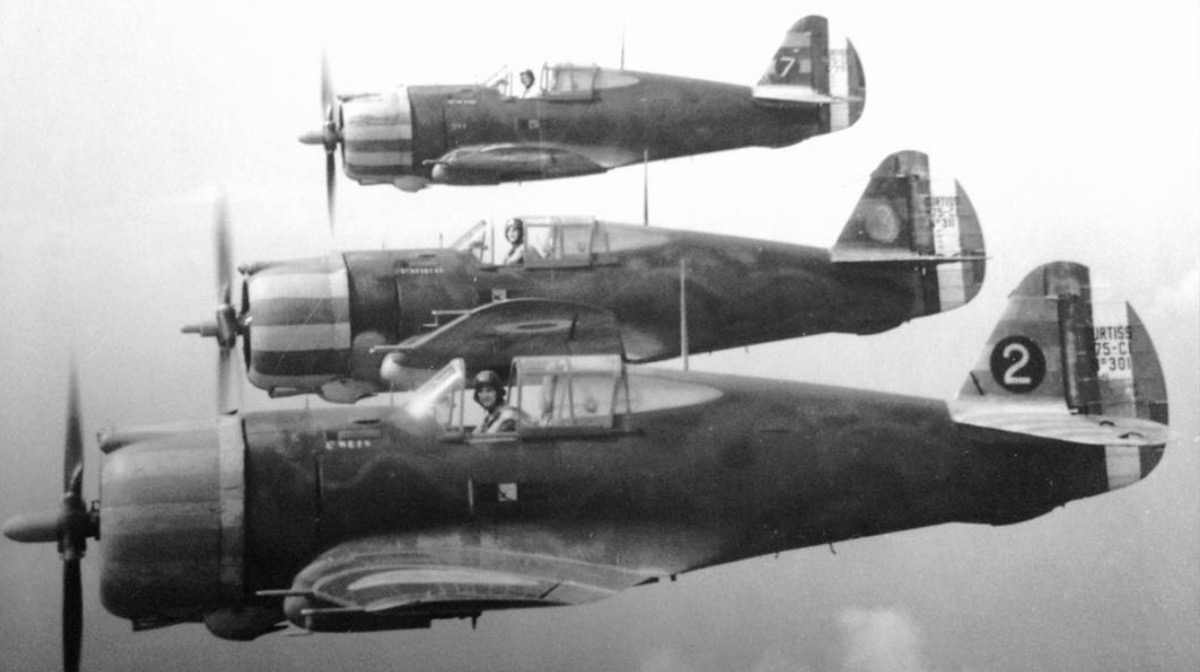Price: $19.95
- 7 magazines, 2 manuals, & photos
- PDF contains 450 pages
- Content is keyword searchable
- Print a personal copy
- Pay via PayPal or Credit Card
- International orders welcome!
- Download files upon payment
August 1972
- Mossie, Story of the RAF’s Wooden Wonder
- Terror Bomber, Caging the Luftwaffe’s Mythical Beast
- Hawk 75, The Air Corps’ Classic Monoplane Fighter
- Wings Over The Atlantic, The Ill-Fated Sikorsky S-35
February 1973
- GM’s Flying Frankenstein, the Reluctant P-75 Eagle
- Hawkman – Interview with Donovan Berlin, Designer of the P-36 & P-40
- The First Corsair, Vought’s Legendary O2U
- Blow Torch Across The Atlantic, Colonel Dave Schilling’s 56th Fighter Group
April 1978
- Did America enter WWII in 1938?
- Real story of Pre Lend-Lease French Hawk 75 Fighters
- Search for speed, Part 2 of Howell-Miller Designs
- Miles & Atwood Racer, the DH-4 “Flaming Coffins”
March 1983
- Pitcairn Autogiro – King of the Whirling Blades
- The Curtiss P-40 Warhawk Story
February 1987
- Army Air Corps Special Edition 1920-1940
- Biplanes to Monoplanes
- Air Service to the World’s Greatest Air Force
October 1990
- Lockheed’s Constellation
- Curtiss XP-46
August 2001
- First Combat over Pearl Harbor
- In the Cockpit of the Nieuport 17
- Nightbomber: Invaders in Korea
- Fast Freight Mosquitos
Manuals & Photos
- P-36A-C Manual, 1940 (Partial)
- Hawk 75-A Specifications
- Over 120 Curtiss P-36 / Hawk 75 photos
Curtiss P-36 Hawk / Hawk 75
P-36A Specifications
Variants
On Display
Cutaway
Videos
General Characteristics
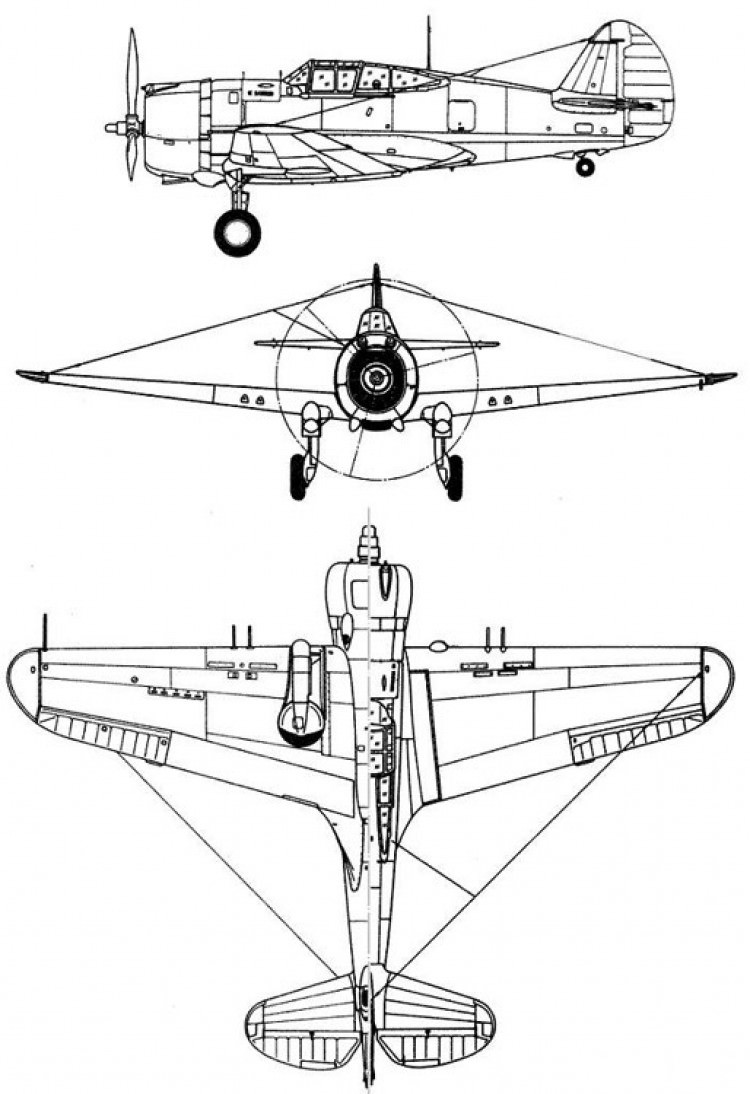
- Crew: 1
- Length: 28 ft 6 in (8.69 m)
- Wingspan: 37 ft 4 in (11.38 m)
- Height: 8 ft 5 in (2.57 m)
- Wing area: 235.94 sq ft (21.920 m2)
- Airfoil: root: NACA 2215; tip: NACA 2209
- Empty weight: 4,567 lb (2,072 kg)
- Gross weight: 5,650 lb (2,563 kg)
- Max takeoff weight: 6,010 lb (2,726 kg)
- Powerplant: 1 × Pratt & Whitney R-1830-17 Twin Wasp 14-cylinder air-cooled radial piston engine, 1,050 hp (780 kW)
- Propellers: 3-bladed constant-speed propeller
Performance
- Maximum speed: 313 mph (504 km/h, 272 kn)
- Cruise speed: 270 mph (430 km/h, 230 kn)
- Range:
625 mi (1,006 km, 543 nmi) at 270 mph (230 kn; 430 km/h)
860 mi (750 nmi; 1,380 km) at 200 mph (170 kn; 320 km/h)
- Service ceiling: 32,700 ft (10,000 m)
- Rate of climb: 3,400 ft/min (17 m/s)
- Wing loading: 23.9 lb/sq ft (117 kg/m2)
- Power/mass: 0.186 hp/lb (0.306 kW/kg)
Armament
- Guns: ** 1 × 0.30 in (7.62 mm) M1919 Browning machine gun
- 1 × 0.50 in (12.7 mm) M2 Browning machine gun
- Bombs: some were also later fitted with a single hardpoint under each wing that could carry a bomb of up to 100 lb (45 kg) or a light bomb rack for three 50 lb (23 kg), five 20 lb (9 kg) or 30 lb (14 kg) bombs
- Model 75A – Company-owned demonstrator aircraft flown with several engine fits
- Model 75B – Prototype with Wright R-1820 radial engine
- Model 75D – First prototype, Wright Whirlwind R-1670 radial
- Model 75H – Internal company designation for a simplified export version with fixed landing gear, two slightly differing aircraft built, first sold to China, second to Argentina
- Model 75I – Company designation for the P-37.
- Model 75J – Company-owned 75A temporarily fitted with an external supercharger
- Model 75K – Unbuilt version, intended to use the Pratt & Whitney R-2180 Twin Hornet radial.
- Model 75P – Production P-36A (serial 38-010) fitted with Allison V-1710 liquid-cooled engine, prototype for Curtiss P-40
- Model 75R – Company-owned 75A temporarily fitted with R-1830-SC2-G with turbo-supercharger, attained 330 mph (530 km/h) but proved complex and unreliable
- Model 75S – Company designation for the P-42
- Y1P-36 (Model 75E) – USAAC prototype, Pratt & Whitney R-1830
- P-36A (Model 75L) – USAAC version, later production P-36A-3 mounted four .30 in (7.62 mm) machine guns in the wings in addition to fuselage armament
- P-36B – Production P-36A fitted with an R-1830-25 producing 1,100 hp (820 kW), reached 313 mph (504 km/h), returned to original P-36A configuration
- P-36C – An additional 0.30 in machine gun installed in each wing with external ammunition boxes under the wings, R-1830-17 of 1,200 hp (890 kW); last 30 production aircraft were completed as P-36Cs
- XP-36D – Production P-36A modified with two .50 in (12.7 mm) machine guns in the nose and four 0.30 in machine guns in the wings
- XP-36E – Production P-36A armed with four 0.30 in machine guns in the wings, retained standard fuselage guns
- XP-36F – Production P-36A fitted with two 23 mm (0.91 in) Madsen autocannons under the wings, reverted to P-36A because guns imposed an unacceptable performance penalty with top speed of only 265 mph (426 km/h).
- P-36G – Hawk 75A-8 used by Norway for training in Canada; later delivered to Peru. R-1820-G205A of 1,200 hp.
- Hawk 75A-1 – First production batch for France, four 7.5 mm (0.295 in) machine guns, R-1830-SC-G of 900 hp (670 kW); 100 built
- Hawk 75A-2 – Second production batch for France, either R-1830-SC-G or 1,050 hp (780 kW) R-1830-SC3-G, six 7.5 mm machine guns; 100 built
- Hawk 75A-3 – Third production batch for France, similar with Hawk 75A-2;[24] 135 built (133 delivered).
- Hawk 75A-4 – Last production batch for France, Hawk 75A-2 with Wright R-1820-G205A Cyclone radial with 1,200 hp: 285 built, 81 delivered to France; others to Great Britain as Mohawk IV
- Hawk 75A-5 – Similar to Hawk 75A-4. Built under license in China (production was later moved to India), absorbed into RAF as Mohawk IV
- Hawk 75A-6 – Version for Norway; aircraft captured during the German invasion were eventually sold to Finland
- Hawk 75A-7 – Version for Netherlands East Indies: 1,200 hp Cyclone, one .5 in (12.7 mm) and one .303 in (7.7 mm)in cowl and two .303 in (7.7 mm)in wings; later four .303 in (7.7 mm) (two in nose, one in each wing) and six 50 lb (23 kg) bombs.
- Hawk 75A-8 – Export version for Norway. Later redesignated P-36G.
- Hawk 75A-9 – 10 aircraft delivered to Persia, captured still in crates and used by RAF in India as Mohawk IVs
- Hawk 75M – Simplified version with fixed landing gear and Wright R-1820 Cyclone for China, built by both Curtiss and Central Aircraft Manufacturing Company in China
- Hawk 75N – Simplified version for Siam (Thailand) with non-retractable landing gear and wheel pants.
- Hawk 75O – Simplified version for Argentina, 30 built and delivered by Curtiss with additional 200 to be built under license locally by Fabrica Militar de Aviones, however only 20 were completed.
- Hawk 75Q – Two additional simplified demonstrators for China. At least one is reputed to have been given an armament similar to that of the XP-36F and to have engaged in combat over Shanghai during the Japanese attacks in September 1937, reportedly shooting down several bombers before being brought down with the loss of the American pilot.
- XP-37 – Allison V-1710 inline, cockpit moved to the rear of the fuselage
- YP-37 – Service test version of XP-37, 13 built
- XP-40 – Allison V-1710 inline, prototype of the Curtiss P-40 Warhawk, one converted from a P-36A
- XP-42 – Testbed for streamlining cowlings around air-cooled engines
-
New Zealand
- CU-554 – Hawk 75A-6 under restoration to airworthy condition at Ardmore Airport, New Zealand for Jerry Yagen’s Military Aviation Museum. Formerly located at Omaka Aerodrome in Blenheim, New Zealand.
-
Thailand
- Unknown ID – Hawk 75N on static display in the Royal Thai Air Force Museum in Bangkok.
-
United Kingdom
- N°82 – Hawk 75A-1 airworthy at The Fighter Collection in Duxford, Cambridgeshire. It was one of the first 100 delivered to the French in April 1939. It wears French camouflage and is painted in markings from two different periods during its service on either side of the fuselage.
- 38-210 – P-36C airworthy at The Fighter Collection in Duxford, Cambridgeshire. It was the last P-36C built and was restored in 2015 in Chino, California, before being shipped to England. It is painted in US Army Air Corps silver and yellow.
-
United States
- 38-001 – P-36A on static display at the National Museum of the United States Air Force in Dayton, Ohio. It is the first P-36A to be delivered to the Air Corps and is displayed in the markings of the P-36A flown by Lt Phil Rasmussen during the Japanese attack on Pearl Harbor.


